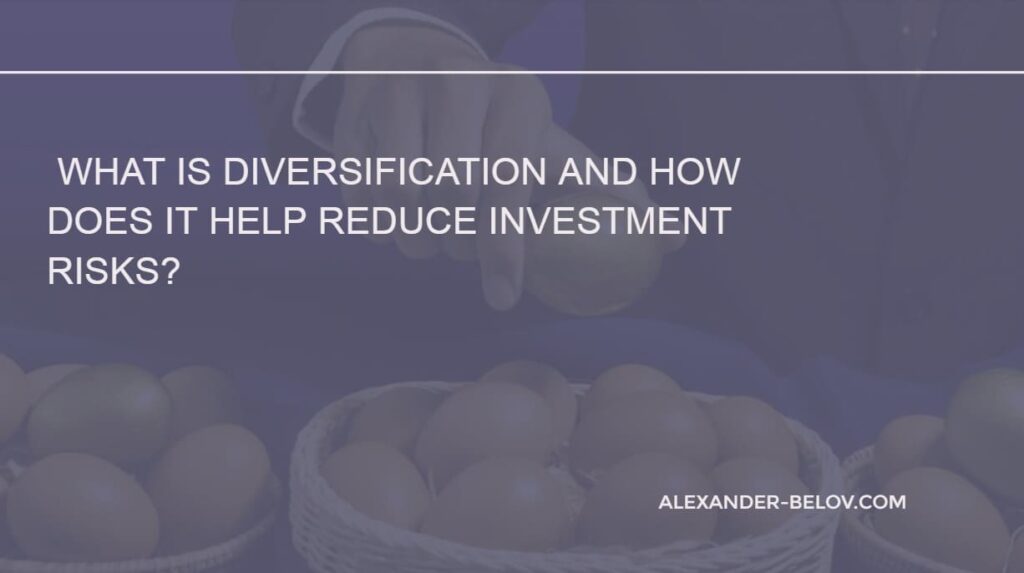What is Diversification and How Does it Help Reduce Investment Risks?
Investing in financial markets can be a rewarding endeavor, but it also comes with its fair share of risks. One way to mitigate these risks is through diversification. Diversification is a strategy that involves spreading investments across different assets or asset classes to reduce the impact of any one investment’s performance on the overall portfolio. In other words, it’s the age-old saying of not putting all your eggs in one basket.

The logic behind diversification is simple. Different investments perform differently under various market conditions. By diversifying your portfolio, you can potentially offset the losses from one investment with gains from another. This helps to reduce the overall volatility of the portfolio and smooth out returns over time.
There are several ways to achieve diversification. The most common method is to invest in a mix of different asset classes, such as stocks, bonds, and real estate. Each asset class has its own risk and return characteristics, so by combining them in a portfolio, investors can benefit from the potential upside of each class while reducing the impact of any individual investment’s poor performance.
Within each asset class, diversification can also be achieved by investing in a variety of securities. For example, instead of investing in just one company’s stock, an investor can spread their holdings across multiple companies and industries. This helps to reduce the risk of a single company’s poor performance negatively impacting the entire investment.
Another aspect of diversification is geographical diversification. Investing in different countries or regions can help reduce the risk of being overly exposed to a single country’s economic or political events. By diversifying internationally, investors can benefit from the growth potential of different markets while reducing the impact of any one country’s downturn.
Diversification is not a foolproof strategy, as it does not guarantee profits or protect against losses. However, it is widely considered a fundamental principle of investing because it helps to manage risk. By diversifying their portfolios, investors can potentially reduce the impact of any one investment’s poor performance on their overall wealth.
It’s important to note that diversification does not eliminate all investment risks. Factors such as market fluctuations, economic conditions, and unforeseen events can still result in losses. Therefore, it is crucial for investors to regularly review and rebalance their portfolios to ensure that their diversification strategy remains aligned with their financial goals and risk tolerance.
In conclusion, diversification is a strategy that involves spreading investments across different assets, asset classes, and geographical regions to reduce investment risks. By diversifying, investors can potentially offset losses from one investment with gains from another, thereby reducing the overall volatility of their portfolio. While diversification does not eliminate all risks, it is an essential tool for managing risk and increasing the likelihood of long-term investment success.



